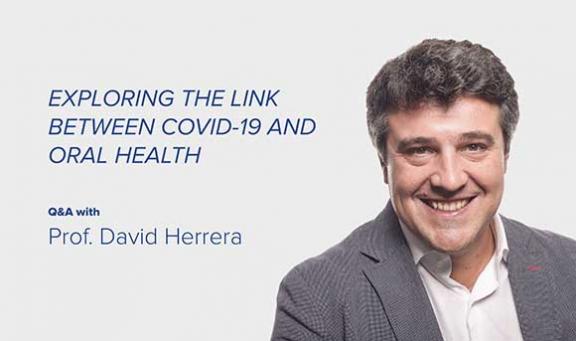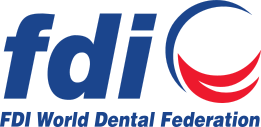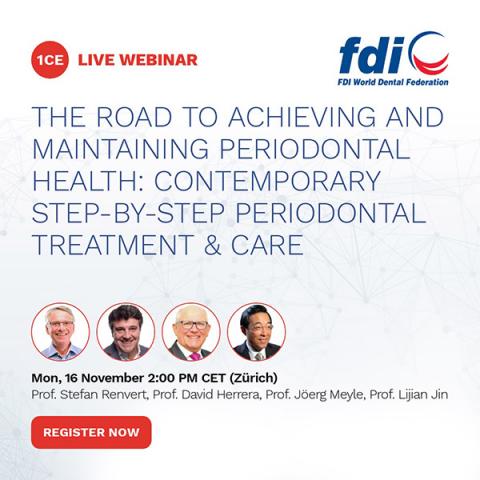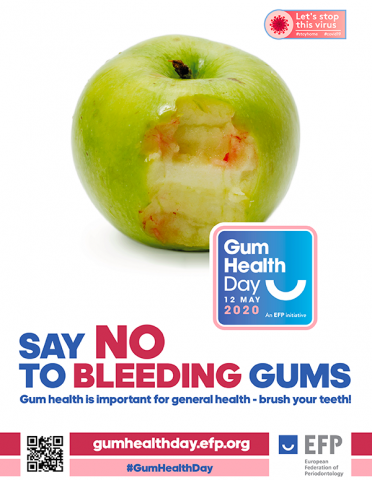"Improvements in periodontal health and oral hygiene may help control the COVID-19 pandemic": Q&A with Prof. David Herrera

Prof. David Herrera is a full-time professor of periodontology, associate dean for clinics and co-director of the EFP Graduate Program in Periodontology at the University Complutense of Madrid (Spain). He is the former president of the Spanish Society of Periodontology, the current president of the IADR Periodontal Research Group and past president of the IADR Continental European Division.
Prof. Herrera is also an author of the recently published journal article “Is the oral cavity relevant in SARS-CoV-2 pandemic?” and a member of the FDI Global Periodontal Health Project Task Team. FDI spoke to Prof. Herrera for his expert point-of-view on the link between the oral cavity and COVID-19.
What are the key considerations in terms of the oral cavity when talking about COVID-19 infection and transmission?
The mouth has been considered a very relevant element in the transmission and pathogenicity of SARS-CoV-2. Firstly, the mouth is one of the access points for the virus to enter the body. Secondly, in the first 10 days, an infected patient usually remains asymptomatic, but highly contagious. During this time, the virus accumulates at the nasal, oral and pharyngeal mucosa, and only later will it further accumulate in the lungs.
ACE2 receptors in oral mucosae have been demonstrated to be high, especially in the tongue mucosae. Moreover, the number of ACE2 receptors in the salivary glands is higher than in the lungs, so they could be a reservoir area for SARS-CoV-2 in asymptomatic patients. Finally, salivary droplets/aerosols represent the most relevant transmission route of the virus.
Thus, the oral cavity represents one of the access points for the virus, which can then be easily colonized due to the availability of ACE2 receptors. What’s more, the mouth may be one of the most relevant reservoirs of the virus, and the perfect source of transmission via saliva. It has also been suggested that the oral levels of the virus can be associated with the severity of COVID-19.
Could mouthwashes have a role to play in reducing oral viral load and the risk of COVID-19 transmission?
The impact of oral interventions in the oral levels of SARS-CoV-2 may be considered as very relevant, and the most relevant role has been given to mouth rinses with virucidal action. A reduction in the oral viral load may be associated with a reduced amount of virus expelled by the carrier and a smaller risk of transmission, as well as a lower severity of the disease.
Very early in the pandemic, pre-procedural rinses were recommended before any dental intervention, with hydrogen peroxide, povidone iodine and cetylpyridinium chloride being the most frequent recommendations.
Today, there is still limited direct evidence of the possible impact of pre-operative rinsing with oral antiseptics on the SARS-CoV-2 oral viral load, but the possible beneficial effect of using oral antiseptics has been indirectly assessed by evaluating the in vitro and in vivo antiviral activity of the most common active agents. This evidence (including the recently available direct evidence) suggests that povidone iodine and cetylpyridinium chloride may be relevant agents for pre-operative rinsing.
However, another relevant impact of mouth rinses with virucidal action, if they do indeed reduce the oral viral load, could be a reduction in the risk of transmission from an infected subject and in the development of the disease. These could be tested in subjects—both those with confirmed infections and those suspected of being infected—who would use the mouth rinse for a period of 10-15 days.
Today, there is no direct evidence impact of using these antiseptics daily for limited periods of time (e.g. when being a carrier of the virus) on the viral transmissivity. However, the indirect evidence available for pre-procedural mouth rinses suggests that cetylpyridinium chloride may be the most relevant agent to use for limited periods of time, since its substantivity, antibiofilm impact and organoleptic properties are better for longer-term use. Results from clinical studies on this will be published soon.
Are there any other links between oral health and COVID-19?
A relevant hypothesis has been proposed, suggesting that periodontitis may increase the risk of suffering from a more severe form of COVID-19. The biological plausibility behind this includes the presence of common risk factors (e.g. smoking) and comorbidities (e.g. diabetes), the systemic inflammation associated with periodontitis, and a dysregulated immune response in periodontitis patients.
In addition, available evidence (before the pandemic) has established associations between lung infections and periodontitis, poor oral hygiene, and high levels of periodontal pathogens. One of the explanations for that, especially in institutionalized patients or those in ICUs, has been the aspiration of bacteria from the mouth. In patients with periodontitis there are larger amounts of biofilm present, and with more pathogenic bacteria. This, of course, can be considered as relevant in the COVID-19 context.
What impact has the pandemic had on oral health?
The impact on oral health of the pandemic is clear, and the explanation for that is based on multiple aspects. Two aspects may be highlighted here: on the one hand, limited access to professional oral care due to restrictions, perception of risks or economic constraints; on the other hand, all the consequences of stress and anxiety, including the overall impact on our immune system, less healthy habits, and bruxism (teeth grinding).
A positive aspect is that the dental setting has been identified as a place with very limited (if not negligible) risk of virus transmission, with an excellent implementation of preventive protocols.
What are some key oral health messages to remember during the pandemic?
Based on the available evidence and the proposed hypothesis, my final message is that improvements in periodontal health and oral hygiene, as well as the use of mouth rinses with virucidal activity, may help control the COVID-19 pandemic.



